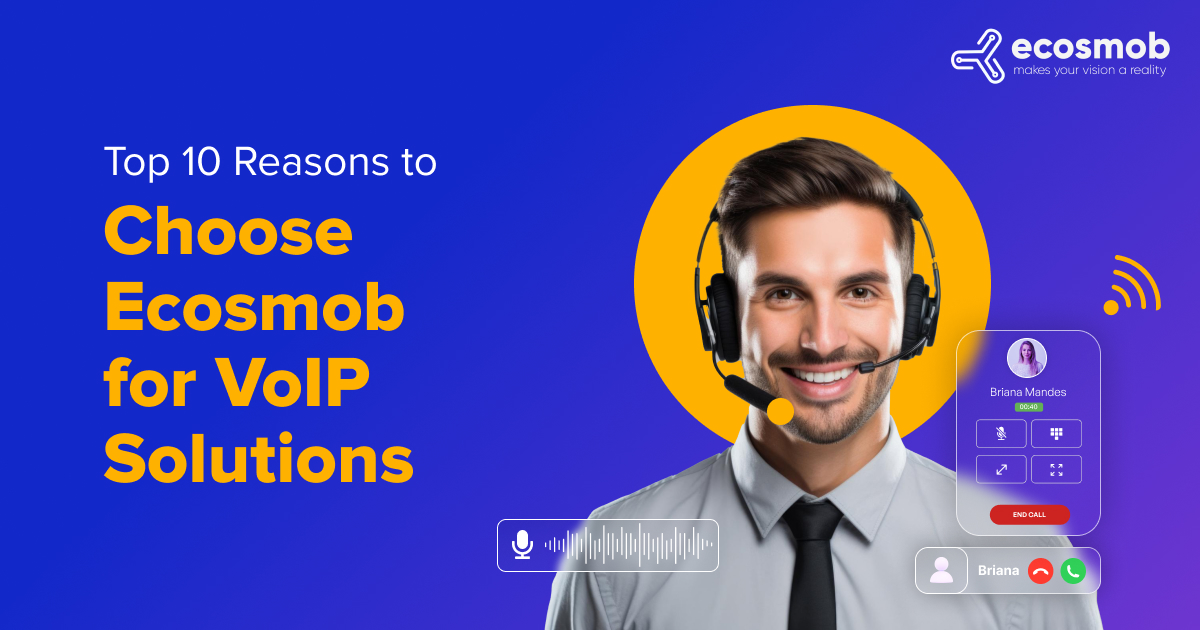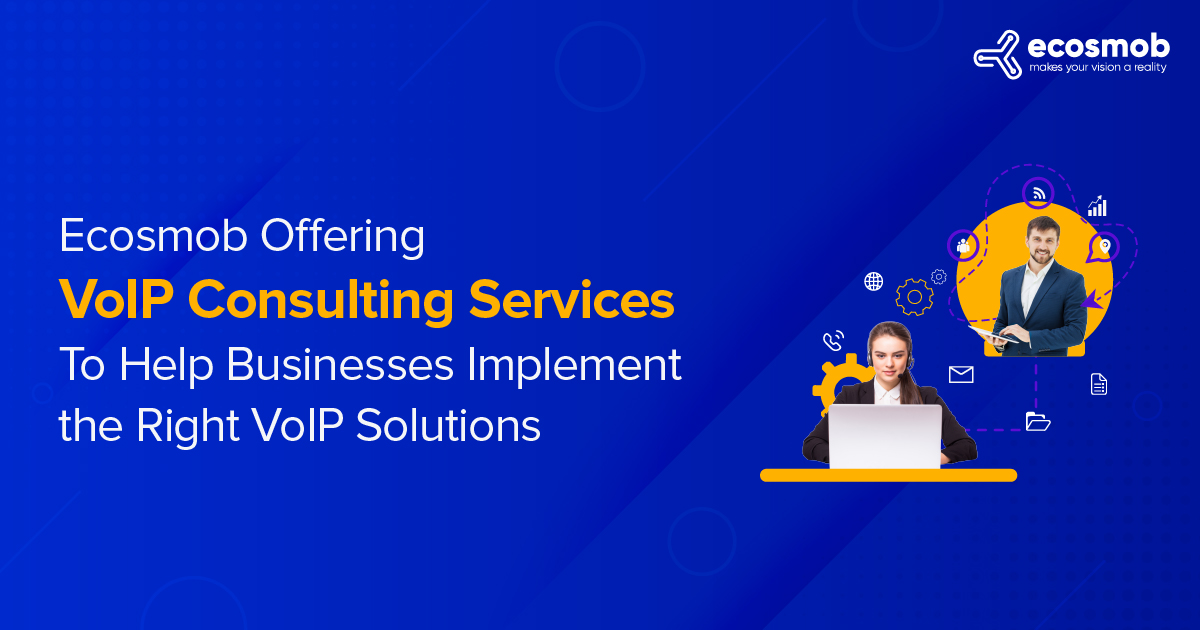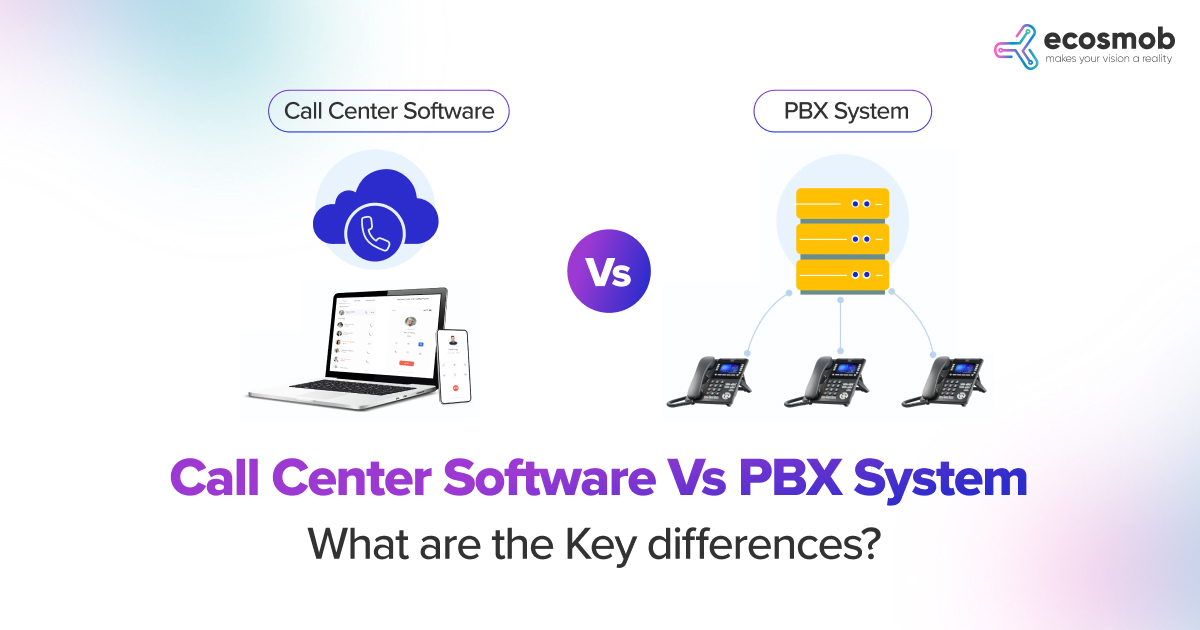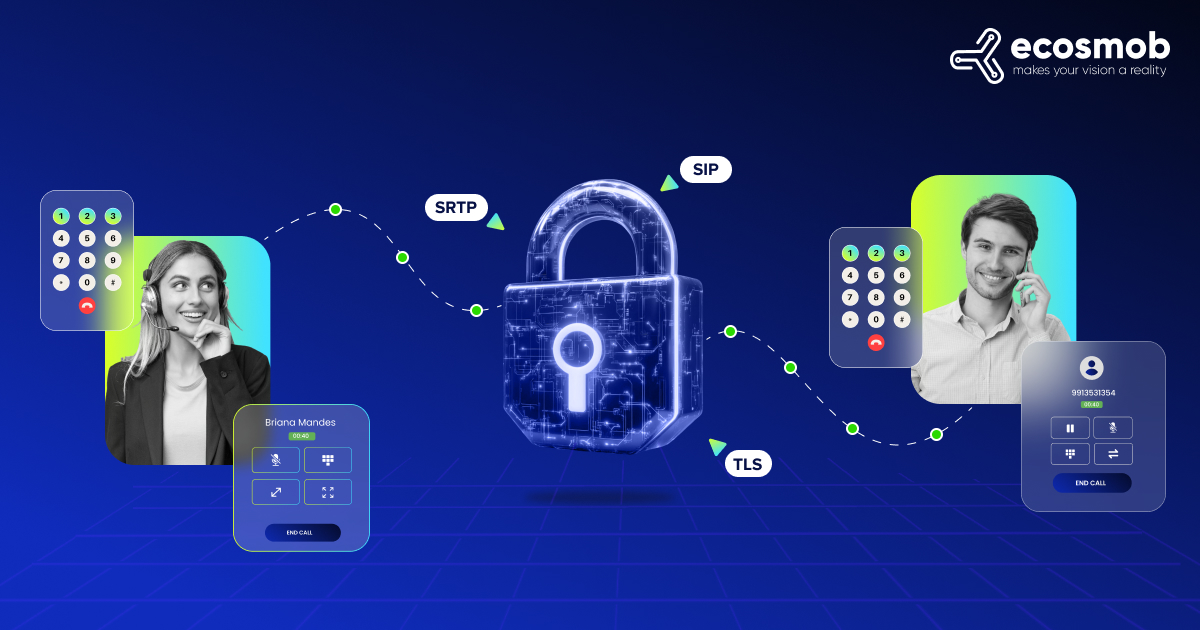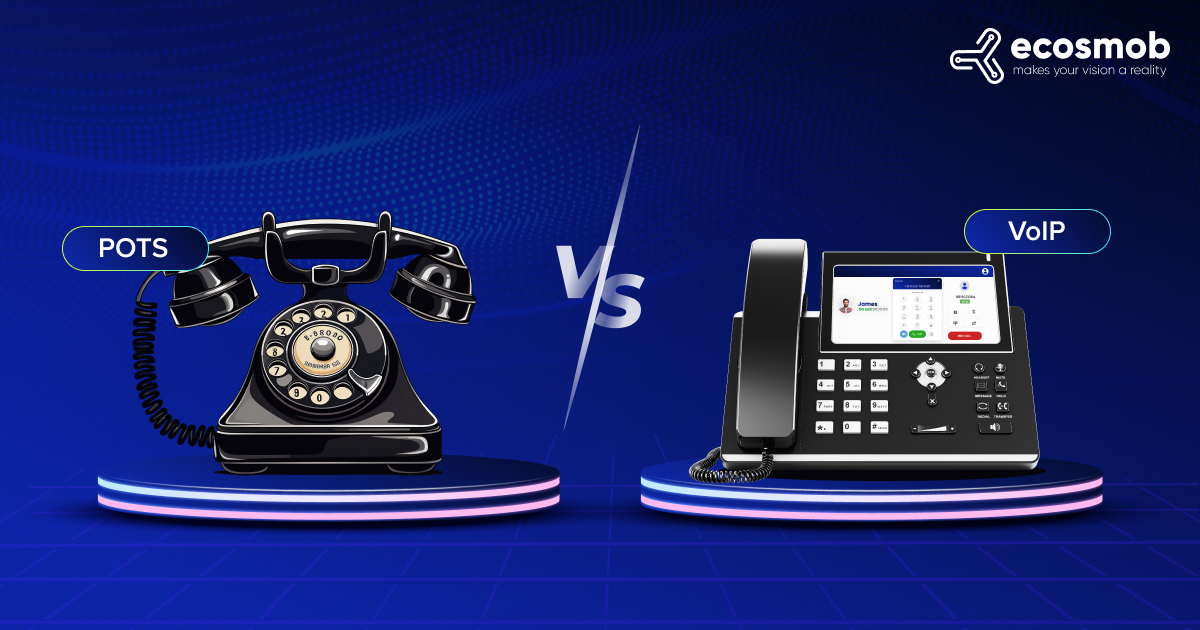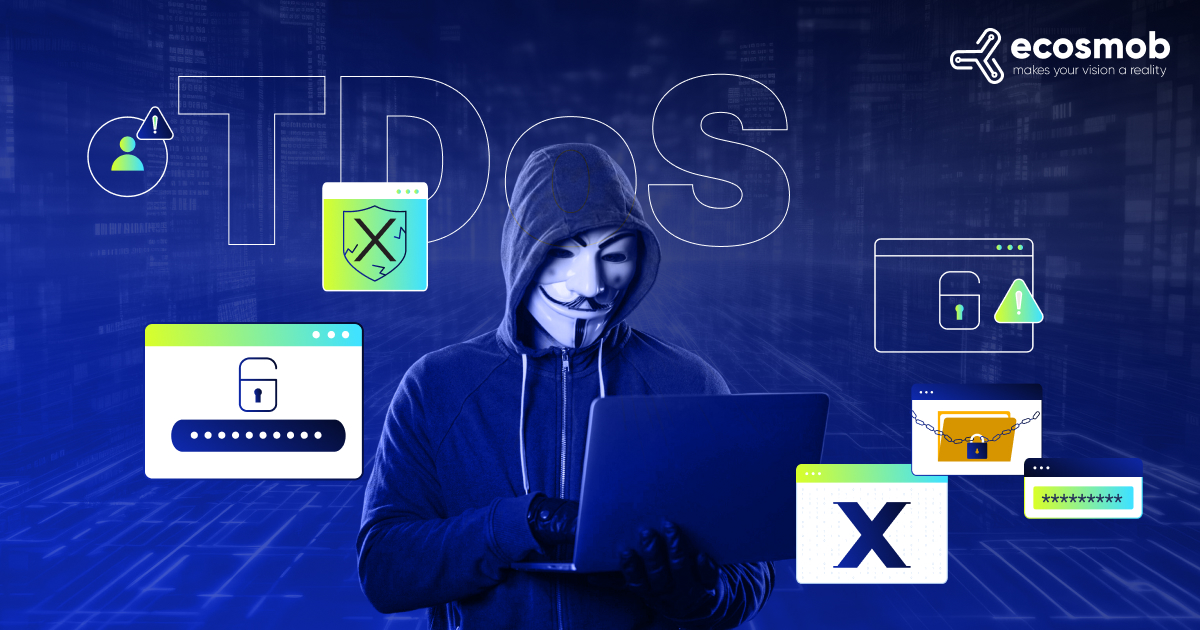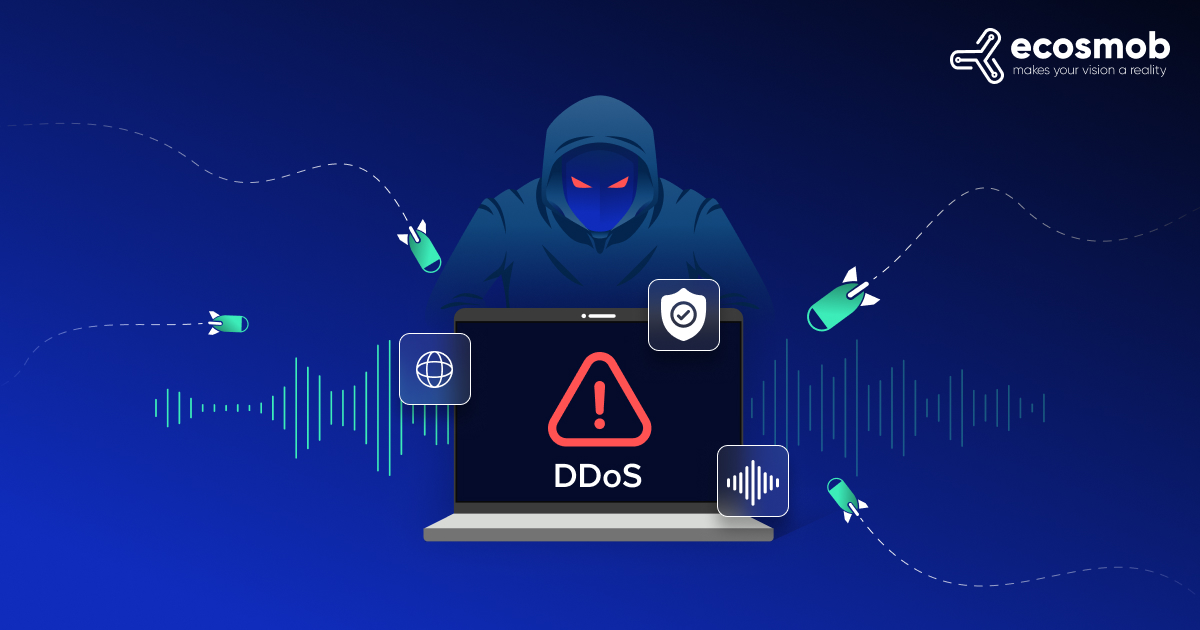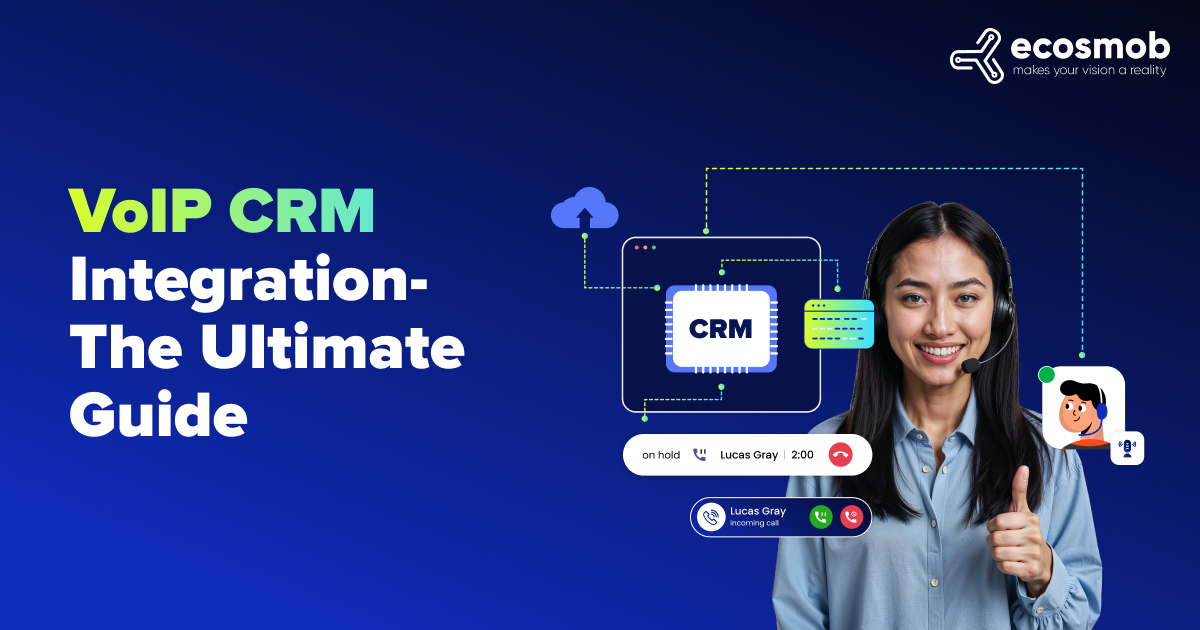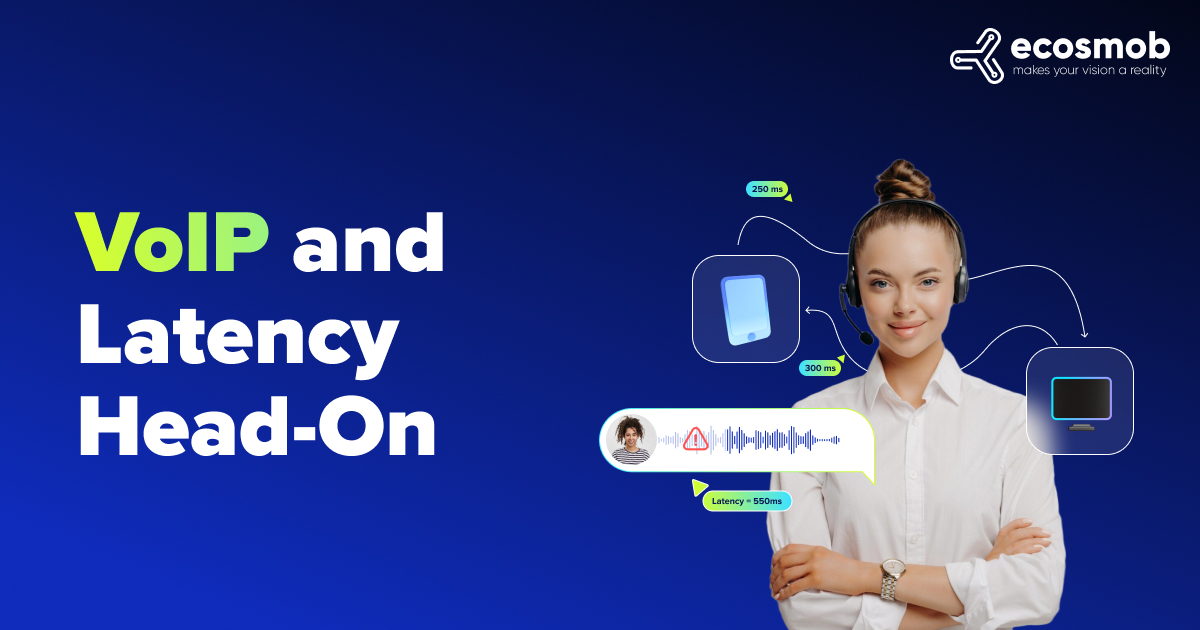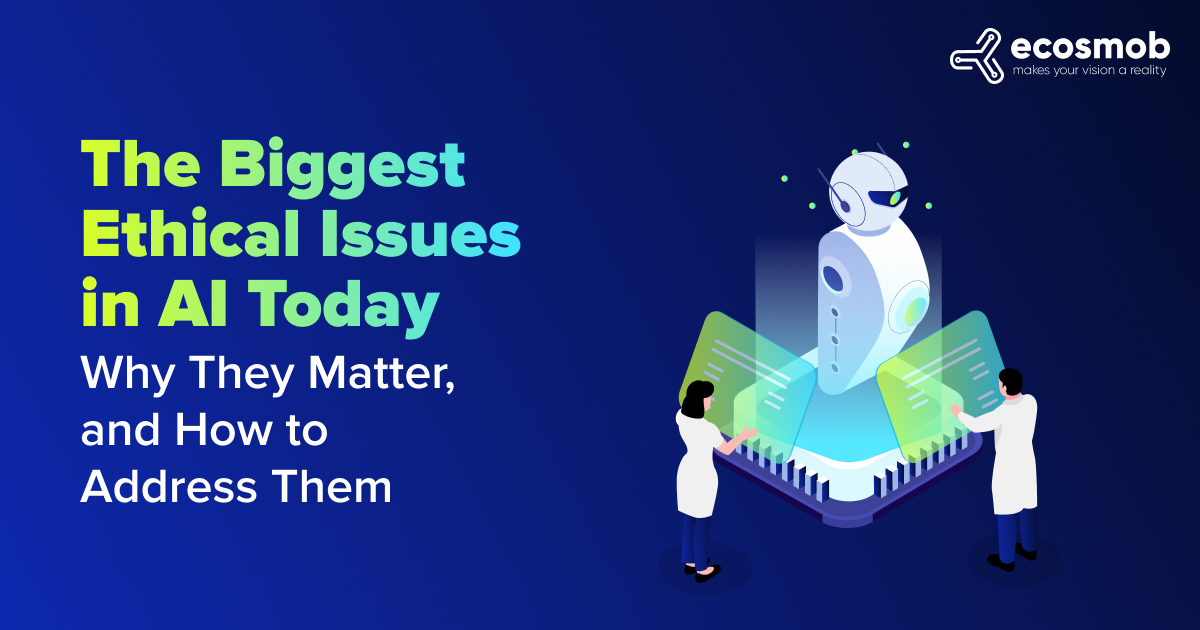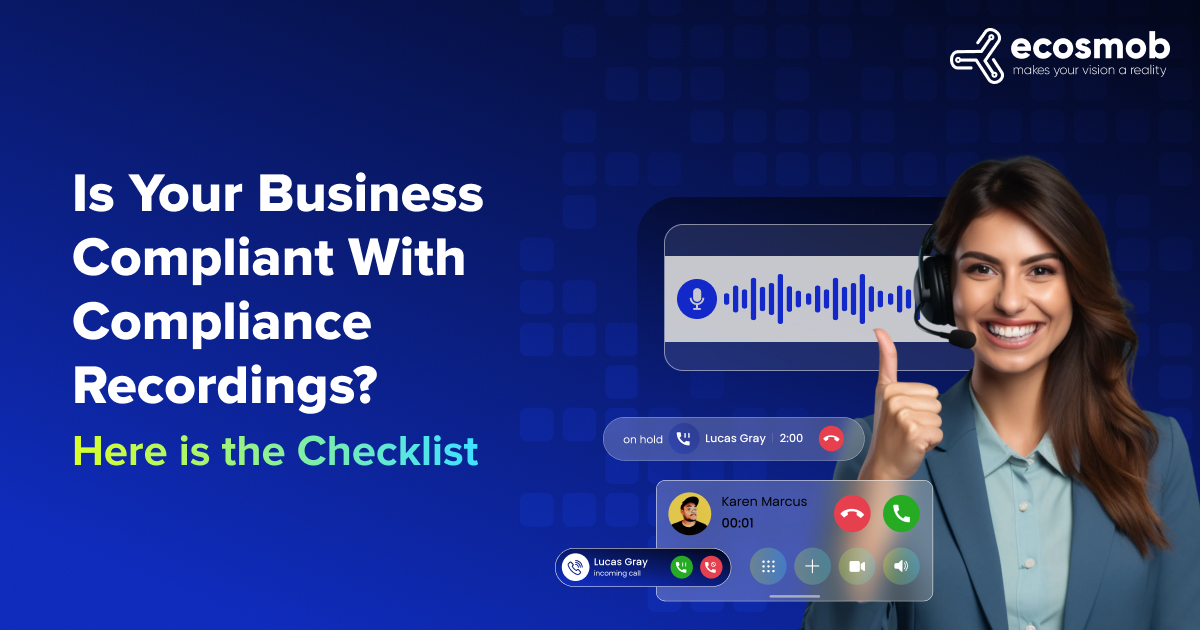QUICK SUMMARY
Discover the key differences between Call Center Software and PBX Systems. Understand their unique features and benefits and how each technology aligns with your business needs to enhance communication efficiency and customer service.
In the ever-evolving business communication, choosing the right technology is crucial for optimizing operations and delivering exceptional customer service. Call Center Software and PBX Systems are prominent solutions with advantages and functionalities. While Call Center Software is designed to enhance customer interactions with features like advanced analytics, omnichannel support, and automated call distribution, PBX Systems focuses on efficient internal communication and call management. This blog will explore Call Center Software’s and PBX Systems’ intricate differences, examining their unique features and benefits. By the end, you’ll comprehensively understand which solution best fits your organization’s needs and how it can significantly enhance your communication strategies.
Experience the features and benefits of our Call Center Software or PBX Systems by contacting us.
Understanding PBX Systems
A Private Branch Exchange (PBX) system has long been the backbone of business communication, managing incoming and outgoing calls within an organization. But what is a PBX telephone system, and how does it work? A PBX system is an on-premise hardware setup that connects internal phone extensions to external phone lines. It routes calls within an organization, allowing employees to communicate internally and with clients outside the business network.
According to Grandview research, The global PBX systems market size was valued at approximately $29.5 billion in 2023 and is projected to grow at a compound annual growth rate (CAGR) of 6.2% from 2024 to 2030. This growth is driven by the increasing demand for cost-effective communication solutions and advancements in technology.
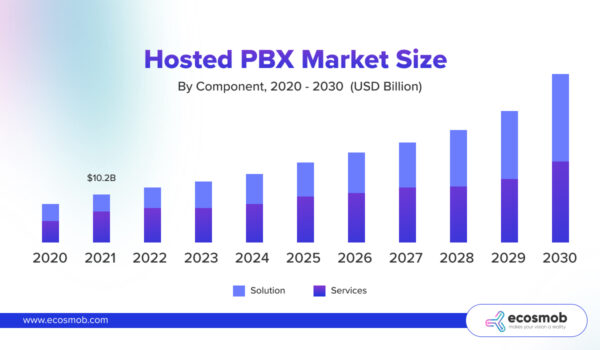
Key Features of the PBX System
A PBX System offers IP PBX Solution Development Using FreeSWITCH with several crucial features that streamline business communication and enhance internal operations. Here’s a detailed look at some of the vital PBX features:
- Call Routing and Switching: One of the core functionalities of a PBX system is its ability to automatically route calls to the appropriate extension based on predefined rules. This feature ensures incoming calls are directed to the right department/ individual, reducing wait times and improving call handling efficiency.
- Automated Attendants: It is also known as virtual receptionists, automated attendants answer incoming calls and present callers with options. Callers can select the appropriate option to be directed to the right person or department. This feature helps manage call flow efficiently and reduces the need for a live receptionist.
- Voicemail and Call Forwarding: PBX systems provide essential voicemail key features that allow callers to leave messages when recipients are unavailable. Additionally, call forwarding capabilities enable calls to be redirected to other extensions or mobile devices, ensuring that important calls are not missed and can be answered from anywhere.
- Conference Calling: PBX systems support multi-party conference calls, which are invaluable for internal meetings or client discussions. This feature facilitates collaboration by allowing multiple participants to join a single call, making it easier to discuss projects, share updates, and make decisions collectively.
- Internal Communication: Beyond managing external calls, PBX systems offer robust internal communication features such as intercom functions and extension dialing. These capabilities streamline employee communication, improving collaboration and efficiency within the organization.
PBX systems have long been a reliable choice for traditional business communication needs, providing a stable, cost-effective solution for managing calls. However, as customer expectations and business requirements continue, there is an increasing demand for more advanced and flexible solutions. Modern alternatives, such as Call Center Software, offer enhanced features and integrations that address the growing complexities of contemporary business environments. As businesses look to stay competitive and meet evolving communication demands, exploring these modern options becomes important for ensuring optimal performance and customer satisfaction.
What is Call Center Software?
On the other hand, Call Center Software is a sophisticated solution tailored to manage customer interactions across various channels, including phone, email, chat, and social media. Unlike traditional PBX systems, which primarily focus on voice communication and internal call management, Call Center Software integrates various contact center technologies, offering a comprehensive and cohesive approach to customer service.
Key Features of Call Center Software
Each feature tailors addresses specific aspects of customer engagement and agent productivity, making it essential to understand what these features can offer. Here’s a closer look at the key features of Call Center Software that can transform your customer service operations:
- Omnichannel Support: This feature ensures that customer interactions are seamlessly managed across multiple channels. Whether a customer reaches out via email, phone, chat, or social media, omnichannel support provides a unified experience, allowing agents to track and respond to customer inquiries efficiently from a single interface. This integration helps maintain consistency and improve the overall customer experience.
- Automated Call Distribution (ACD): ACD intelligently routes incoming calls to the most suitable person based on predefined criteria such as agent skills, availability, and current call volume. This feature minimizes wait times and ensures that customers connect to the right person who can best address their needs, enhancing operational efficiency and customer satisfaction.
- Interactive Voice Response (IVR): IVR systems enable callers to interact with an automated menu to handle routine queries or direct them to the appropriate department. By automating these initial interactions, IVR reduces the load on live agents and ensures that callers receive immediate assistance or are guided efficiently to the right resources.
- Real-Time Analytics and Reporting: Call Center Software provides detailed analytics and reporting capabilities, offering valuable insights into various aspects of operations. It includes metrics on agent performance, call volume, customer satisfaction, and service levels. Real-time data allows managers to monitor performance, identify trends, and make informed decisions to improve service quality continuously.
- CRM Integration: Integrating Call Center Software with Customer Relationship Management (CRM) tools enables agents to access relevant customer data during interactions. This integration enhances personalization by providing agents with background information and previous interaction history, leading to more effective and tailored customer service.
While traditional PBX systems are rooted in conventional telephony and primarily address internal communication needs, Call Center Software is designed to handle the complexities of modern, multi-channel customer interactions. Its advanced specifications make it ideal for businesses delivering exceptional, streamlined, and integrated customer support experiences across various communication platforms.
Differences Between Call Center Software and PBX Systems
When choosing the right communication system for your business, understanding the distinctions between Call Center Software and PBX Systems for business and service providers is essential. Both technologies play pivotal roles in managing communications, but they offer unique features. Here’s a breakdown of the primary differences:
-
Purpose and Functionality
The primary distinction between Call Center software and PBX systems lies in their purpose and functionality. A PBX system fundamentally manages an organization’s internal and external voice communications. It provides essential call management features such as call routing, voicemail, and call forwarding, which streamline internal communication and handle incoming and outgoing calls. PBX systems can be traditional (analog), digital, or modern IP-based (VoIP), with varying levels of functionality depending on the type.
In contrast, Call Center software specifically targets customer service environments, focusing on managing customer interactions across multiple channels, including voice, email, chat, and social media. It provides specialized features such as Automatic Call Distribution (ACD), Interactive Voice Response (IVR), and CRM integration, all designed to enhance the customer experience, improve service efficiency, and handle high volumes of customer interactions effectively.
-
Scalability and Flexibility
Scalability and flexibility are significant factors when comparing Call Center software and PBX systems. Traditional PBX systems often require substantial investment in physical hardware, including telephones, servers, and wiring. This setup can pose challenges and incur high costs when scaling the system. Adding new users or expanding features necessitates purchasing and installing additional hardware, which can be time-consuming and expensive. For businesses anticipating growth or needing frequent adjustments to their communication capabilities, traditional PBX systems may become a limiting factor due to their rigidity.
On the other hand, Call Center software, particularly cloud-based solutions, offers exceptional scalability and flexibility. Cloud-based systems allow businesses to easily adjust their communication capabilities without needing additional hardware. Companies can quickly add or remove agents, upgrade features, and expand services. This flexibility makes cloud-based Call Center software ideal for businesses that expect growth or require dynamic changes in their communication systems.
-
Integration Capabilities
Integration capabilities are another critical difference between PBX systems and Call Center software. PBX systems generally operate as standalone solutions with limited integration options. Traditional systems may need more seamless connectivity with other business applications, such as email platforms, CRM systems, and analytics tools. It leads to fragmented communication processes and a need for more centralized information.
In contrast, Call Center software is designed to integrate seamlessly with various business applications. It includes CRM systems, email platforms, and analytics tools. By offering robust integration capabilities, Call Center software provides agents with comprehensive customer information and a unified view of interactions. This integration enhances the efficiency of customer service operations and allows for more personalized and effective customer interactions.
-
Cost and Maintenance
The cost structure and maintenance requirements of PBX systems and Call Center software differ significantly. PBX systems typically involve substantial upfront hardware, installation, and configuration costs. Ongoing maintenance and support expenses compound these costs. Businesses must handle software updates, hardware repairs, and system upgrades internally or through third-party service providers. It can add up over time and require dedicated IT resources.
In contrast, Call Center software, especially cloud-based solutions, usually operates on a subscription-based model. This model often involves lower initial costs and predictable monthly fees. The service provider manages software updates, maintenance, and assistance, reducing the burden on internal IT teams. This subscription model offers financial flexibility, allowing businesses to scale their services up or down based on their needs without incurring significant additional costs.
-
Advanced Features and Analytics
Call Center software offers significant advanced features and analytics capabilities compared to PBX systems. Traditional PBX systems offer basic features such as call routing, voicemail, and forwarding. While these features are essential for internal communication, they may need more advanced capabilities for modern customer service operations. Traditional PBX systems typically do not include sophisticated analytics or reporting features, limiting the ability to track and improve communication performance.
Conversely, Call Center software excels in delivering advanced features and analytics. It includes capabilities such as predictive dialing, skills-based routing, and AI-powered chatbots, all designed to enhance customer interactions and streamline service processes. Additionally, Call Center software provides robust real-time analytics and reporting capabilities, offering valuable insights into customer interactions, agent performance, and overall contact center efficiency. This data-driven approach enables businesses to give informed decisions, optimize operations, and improve customer satisfaction.
-
User Experience and Interface
The user experience and interface of Call Center software and PBX systems significantly differ. PBX Systems typically offers a more basic user interface for handling calls and internal communication. These systems require users to navigate multiple menus or use physical hardware to manage calls, which is less intuitive for some users.
On the other hand, Call Center Software provides a modern, user-friendly interface designed to streamline interactions across various communication channels. These systems often include intuitive dashboards, drag-and-drop functionality, and real-time notifications, enhancing the user experience for agents and managers. This modern interface simplifies the management of customer interactions and improves overall efficiency.
-
Deployment and Setup
Deployment and setup processes differ markedly between PBX systems and Call Center software. PBX Systems often involve a complex setup process that requires physical installation of hardware, such as telephone lines, servers, and other equipment. This process can be time-consuming and may require professional installation services.
In contrast, Call Center Software, especially cloud-based solutions, typically offers a quicker and more straightforward deployment. Cloud-based systems can be set up remotely, with minimal hardware requirements and faster configuration times. This streamlined deployment process enables businesses to get up and running more efficiently and reduces the initial setup time.
-
Security and Compliance
Security and compliance considerations are essential when choosing between Call Center software and PBX systems. PBX Systems often require businesses to manage their security measures, including the physical security of hardware and software updates. Ensuring compliance with industry standards and regulations, such as GDPR or HIPAA, may involve additional effort and resources.
Call Center Software, particularly those provided by reputable cloud vendors, usually includes built-in security features such as encryption, access controls, and compliance certifications. These systems often offer regular updates and security patches managed by the service provider, which helps ensure adherence to security standards and regulations with less manual intervention.
-
Customization
Customization sets are another area of distinction between PBX systems and Call Center software. PBX Systems generally offer limited customization options, with features primarily determined by the hardware and software setup. Businesses may face constraints in tailoring the system to meet specific needs or integrating advanced functionalities.
In contrast, Call Center Software often provides extensive customization options, allowing businesses to tailor features and workflows to their requirements. It includes configuring routing rules, setting up custom reporting, and integrating with third-party applications. The flexibility of Call Center software enables businesses to adapt the system to their evolving needs and optimize their communication processes.
-
Customer Support and Service
Customer support and service quality can impact the effectiveness of a communication system. PBX Systems often require businesses to rely on internal IT teams or third-party service providers for support and maintenance. Depending on the available resources, it can lead to varying service quality and response times.
Call Center Software, mainly when provided as a cloud-based service, usually includes dedicated customer support from the service provider. This support often comes with features such as 24/7 availability, dedicated account managers, and comprehensive help resources. The high level of support ensures businesses can resolve issues promptly and maintain smooth operations with minimal disruptions.
| Aspect | Call Center Software | PBX Systems |
| Purpose and Functionality | Manages customer interactions across multiple channels (voice, email, chat, social media) with features like ACD, IVR, and CRM integration. | Manages internal and external voice communications with basic features such as call routing, voicemail, and call forwarding. |
| Scalability and Flexibility | Highly scalable and flexible, especially with cloud-based solutions; easy to add or remove agents and adjust features. | Limited scalability; significant investment in physical hardware and additional equipment needed for expansion. |
| Integration Capabilities | Seamlessly integrates with various business applications (CRM, email, analytics) for a unified view of customer interactions. | Limited integration options; often operates as a standalone solution with fragmented communication processes. |
| Cost and Maintenance | Subscription-based model with lower initial costs and predictable monthly fees; service provider handles updates and maintenance. | High upfront costs for hardware, installation, and configuration; ongoing maintenance and support required internally or through third-party providers. |
| Advanced Features and Analytics | Advanced features such as predictive dialing, skills-based routing, AI chatbots; robust real-time analytics and reporting. | Basic features like call routing and voicemail; lacks advanced analytics and reporting capabilities. |
| User Experience and Interface | Modern, user-friendly interface with intuitive dashboards, drag-and-drop functionality, and real-time notifications. | Basic interface with physical hardware and multiple menus, which can be less intuitive for users. |
| Deployment and Setup | Quick and straightforward deployment, especially with cloud-based solutions; minimal hardware requirements. | Complex setup involving physical installation of hardware and potentially requiring professional services. |
| Security and Compliance | Built-in security features like encryption, access controls, and compliance certifications managed by the service provider. | Requires businesses to manage their own security measures; additional effort needed for compliance with industry standards. |
| Customization | Extensive customization options; allows businesses to tailor features, workflows, and integrate with third-party applications. | Limited customization; features are mainly determined by hardware and software setup. |
| Customer Support and Service | Dedicated support from service providers, often with 24/7 availability and dedicated account managers. | Support often relies on internal IT teams or third-party providers, leading to variable service quality and response times. |
Choosing between Call Center software and a PBX system involves evaluating your specific business needs, communication goals, and budget. PBX systems offer a solid foundation for internal communication, while Call Center software provides advanced features and integration capabilities tailored for customer service operations. Understanding the differences in purpose, scalability, integration, cost, and features will help you decide and select the best solution for your business.
Making the Right Choice for Your Business Communication System
Choosing between a PBX Call Center system and software ultimately depends on your business’s needs, goals, and resources. PBX systems remain viable for companies focused on internal voice communication with minimal external interaction. However, for organizations aiming to deliver exceptional customer service across multiple channels, Call Center software provides the necessary tools and flexibility to meet modern demands.
As business communication evolves, assessing your current and future needs is essential, considering factors like scalability, integration capabilities, and cost. Understanding the critical differences between Call Center software and PBX systems allows you to make a smart decision that aligns with your business objectives and improves your overall communication strategy. At Ecosmob Technologies, we specialize in PBX systems and advanced Call Center software. Our team is equipped to help you navigate the challenges of business communication technology. Feel free to discuss your needs and explore our solutions. Our team of experts is here to provide personalized recommendations and assistance to ensure you select the right solution for your business.
Stay updated on the latest trends in Contact Center Technology to enhance your business communication strategies.
FAQs
What is a PBX telephone system?
A PBX (Private Branch Exchange) telephone system is an on-premise hardware setup that manages an organization's internal and external voice communication, connecting internal phone extensions to external phone lines.
How does Call Center software differ from a PBX system?
Call Center software is designed to handle customer interactions across multiple channels and includes advanced features like CRM integration and real-time analytics. At the same time, PBX systems focus on essential voice communication.
Can Call Center software integrate with other business tools?
Yes, Call Center software can seamlessly integrate with several business applications such as CRM, email, and analytics, enhancing overall efficiency and customer service.
Is Call Center software more expensive than PBX systems?
Call Center software typically operates on a subscription model with lower upfront costs/predictable monthly fees, whereas PBX systems involve significant initial investment in hardware and ongoing maintenance costs.
Which is better for a growing business: Call Center software or PBX?
Call Center software is generally better for growing businesses due to its scalability, flexibility, and advanced features that support expansion and customer service improvement.
